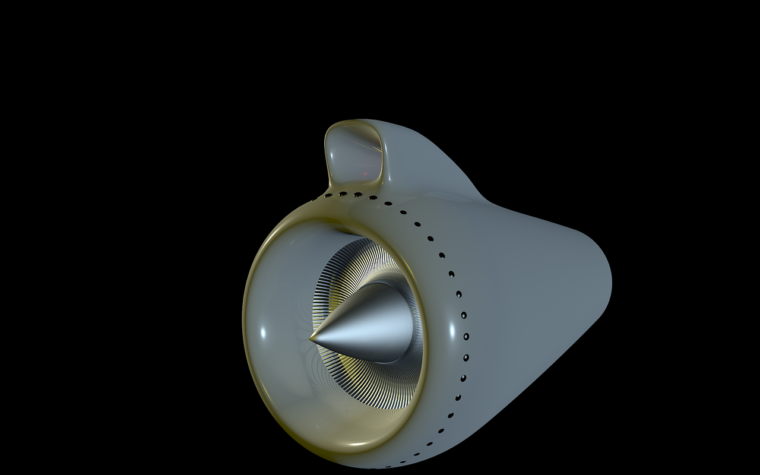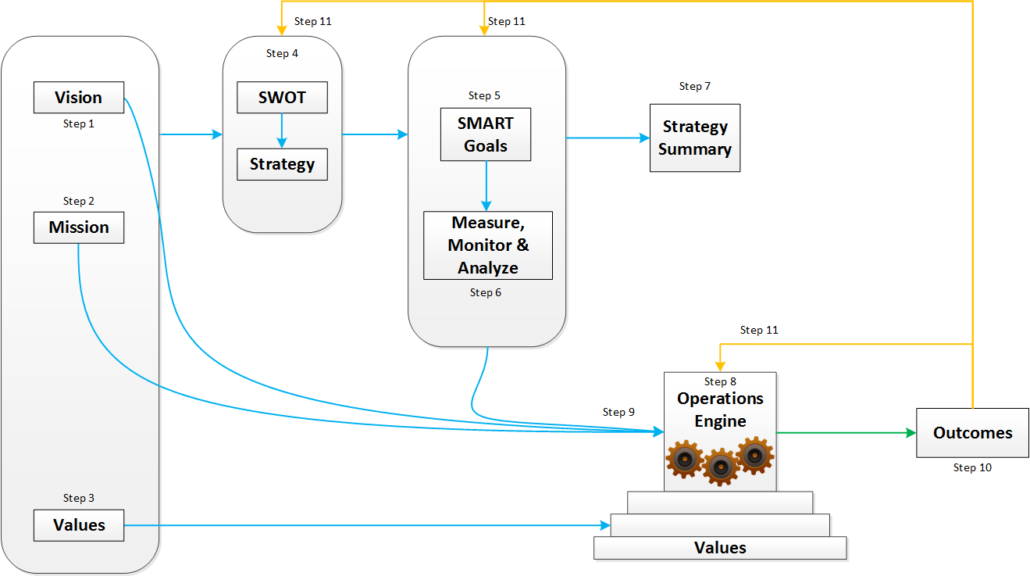Over the last seven weeks, I introduced my Ebook 12 Steps to Business Transformation and I defined the first 7 of the 12 transformational steps. This week we are going to talk about the Operations Engine.

Defining your Operations Engine is step 8 in my new Ebook “12 Steps to Business Transformation.”
The Operations Engine is the power plant or dynamo of your business! This is where your products and services are created and produced. It is where all your operating processes and procedures live. It includes everything from recruiting to facility management, cash flow to business systems, products and services production to supply chain management.
It is the unique combination of these hundreds or thousands of components that defines your Operations Engine, what it produces and how efficiently it runs. So, basically, your Operations Engine will make or break your business.
12 Steps to Business Transformation
12 Steps to Business Transformation is founded on a simple business model and describes the 12 steps required to implement and execute on the model. The whole model is summarized in the Thinking Business Blueprint shown below. And, as mentioned above, the eighth step in the Blueprint is the Operations Engine.
I have written about many different aspects of the Operations Engine. I have listed a few examples below:
- Lessons Learned System
- Compensation Strategies
- Leadership Alignment
- Learning from Failure
- Goal Setting
- Business Analytics
Go ahead and spend some time and review these articles.
Your Operations Engine: The Business Dynamo
The Operations Engine is the power plant of your business. It is where the vast majority of the effort is expended to produce the product or service destined for the marketplace. Very basically it consists of:
- People – everyone that works in your business is part of the Operations Engine. People make or break your Operations Engine and therefore your business. It does not matter how good your processes and tools are, if you have the wrong people, your business will not be successful.
- Processes and/or systems – This is basically everything your business uses to deliver its products or services. A few examples are shown below:
- Recruitment, hiring, and onboarding
- Payroll
- Accounting
- Compensation
- Layout of your building/factory/office and flow of work through it
- Quality
- Proprietary ways of creating products and/or services
- Patents
- Marketing
- Sales
- Engineering
- Procurement
- Shipping and receiving
- Manufacturing
- Tools – these are the physical or virtual tools that are leveraged to deliver your products and services. A few examples are shown below:
- Software
- Business systems
- Machinery
- Building
- Resources – these are the materials used to create your product or service.
From this, it is easy to see that innovations, people development, process improvements and tool improvements can dramatically improve your business. It is also easy to see that the Operations Engine can be a very complex machine to run efficiently, productively and profitably!
Because the Operations Engine is so complex and so critical to your business, it is imperative that you and your leadership spend a great deal of your time focused on its components. Always be optimizing, tuning and pruning. Drive out inefficiencies and implement whatever you can to increase growth, profits, customer satisfaction and employee satisfaction! Be prepared to throw away good tools and processes to implement new tools and processes that will make your company great!
There are currently 22 different tools and processes outlined under the Operations Engine section on the Business Tools page at www.ThinkingBusinessBlog.com . Take a look at these and see if you can modify any of them for your business. I will continue to add the best tools and processes as I find them so stay tuned!
“The reason why it is so difficult for existing firms to capitalize on disruptive innovations is that their processes and their business model that make them good at the existing business actually make them bad at competing for the disruption.” Clayton Christensen
Leave a comment below on the experiences with your business’ Operations Engine
Be sure to sign up at www.thinkingbusinessblog.com for weekly blog updates delivered to your inbox and feel free to forward this article to anyone that could benefit.
Download a free copy of my new Ebook: 12 Steps to Business Transformation


Please note: I reserve the right to delete comments that are offensive or off-topic.